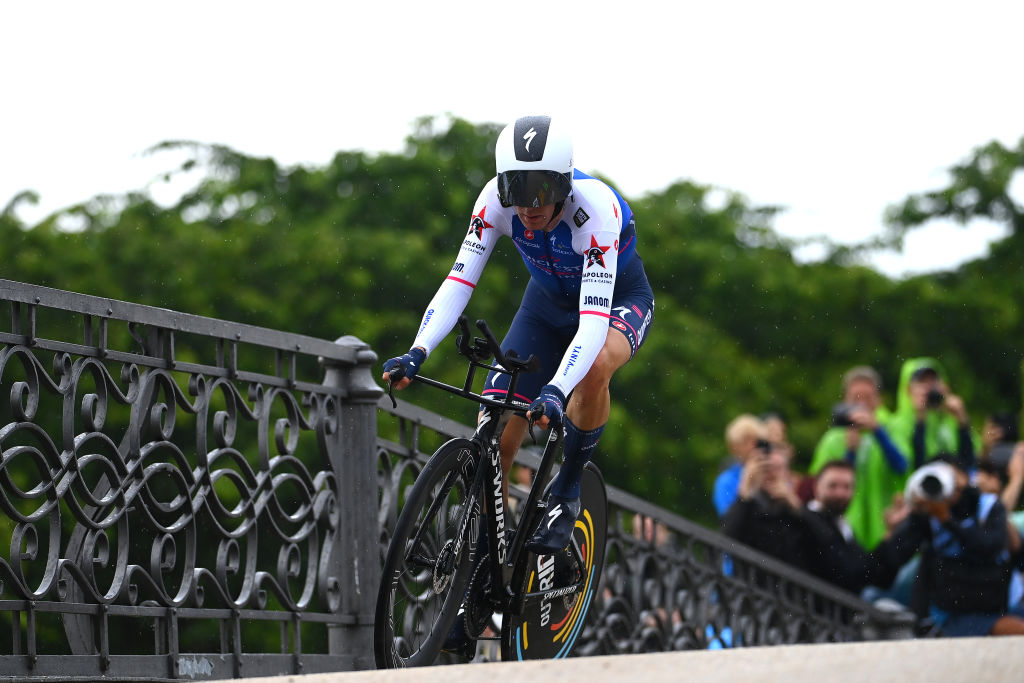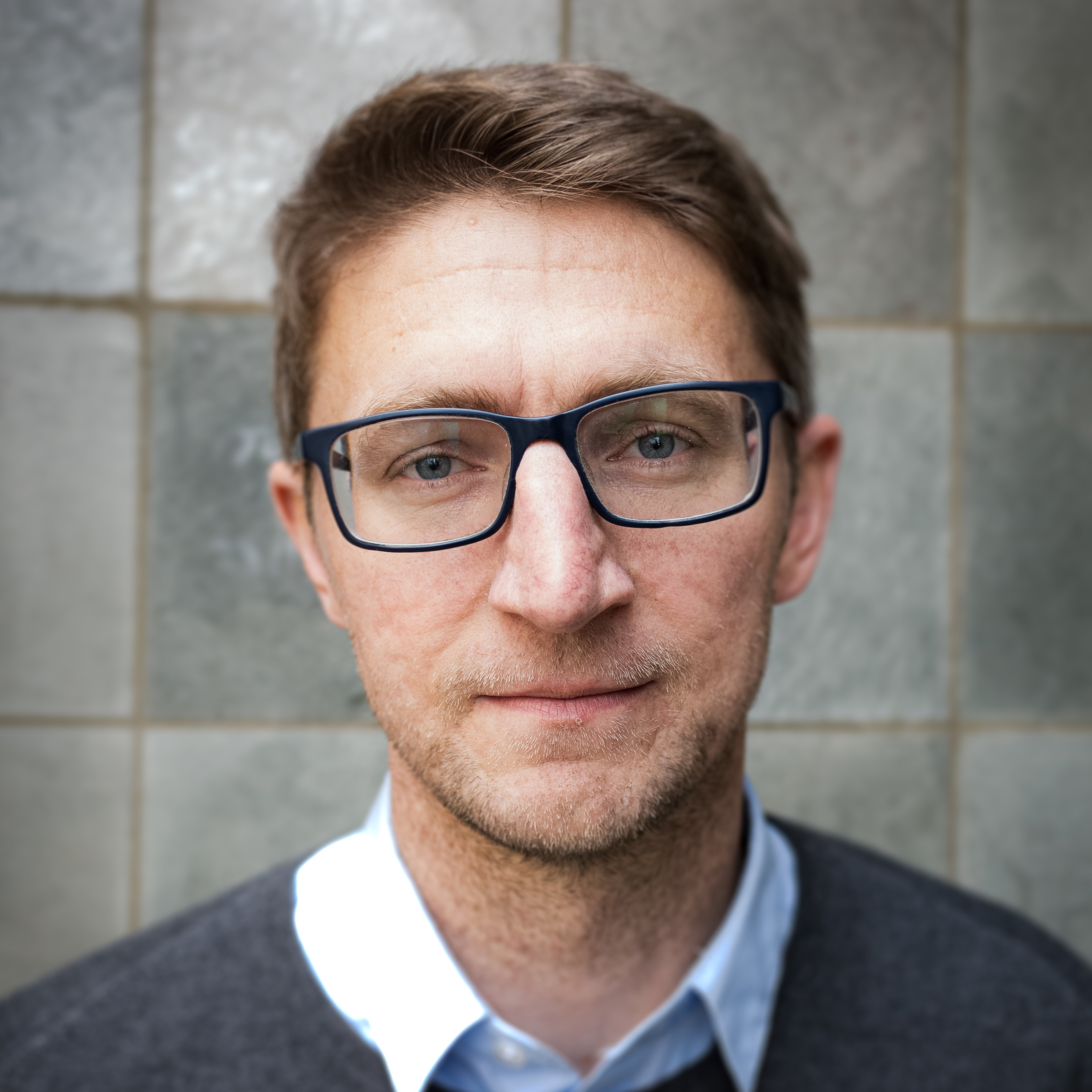Mørkøv: Tour de France sprints are part of QuickStep's DNA
Self-made lead-out man on Cavendish, Jakobsen and learning through YouTube

A week ago, when Michael Mørkøv answered the phone en route to the Danish national championships, it all felt rather hard to fathom.
The journey had taken him across the Great Belt Bridge, which links the islands of Zealand and Funen. The 18km crossing is well-worn by Danish commuters, and now feared by those braced for the finale of stage 2 of the Tour de France.
“I just passed over the bridge in my car and it's really unreal to think about that,” Mørkøv laughed. On Saturday afternoon, that exposed bridge will provide the keynote image of the Tour’s opening road stage, though it will not necessarily be the principal difficulty on the 202km run to Nyborg from Roskilde, home of the eponymous music festival.
“Well, first of all, I'm not sure that the whole peloton will arrive at the bridge because it's not going to be an easy stage before that,” said the QuickStep-AlphaVinyl rider. A resident of Rødovre, on the fringe of Copenhagen, he knows the vagaries of racing on the flatlands of Zealand better than most.
“There are a lot of small nervous roads, and I believe that with a lot of public, it's going to be for sure one of those very hectic first stages in a Grand Tour. We know from the past that these days are very difficult and dangerous. Of course, the bridge itself is a beautiful monument to have in the finale. And if there's just the smallest wind on the day, we're going to be very exposed to it on the bridge.”
With Fabio Jakobsen an obvious favourite in the event of a bunch finish, QuickStep-AlphaVinyl were already expected to occupy prime real estate at the head of the peloton on a day such as this. They now have double the reason to do so after Yves Lampaert claimed a surprise victory in Friday’s opening time trial in Copenhagen.
Lampaert’s maillot jaune means that QuickStep-AlphaVinyl already have something very tangible to show for their Tour, but Patrick Lefevere’s squad will expect more. They have won bunch sprints at every Tour for the past decade, after all.
The latest race content, interviews, features, reviews and expert buying guides, direct to your inbox!
The fast men have changed – Mark Cavendish, Matteo Trentin, Marcel Kittel, Fernando Gaviria, Elia Viviani and Sam Bennett have all weighed in – but the beat has gone on relentlessly.
“All sprinters know this is probably one of the teams where you have the biggest possibility to win races, including at the Tour,” Mørkøv said. “To win sprints, you need one of the best sprinters, obviously, but sprinting is also kind of in this team’s DNA, along with being dominant in the Spring Classics.
“The roster always includes good lead-out men, good riders to control the breakaway. We always bring a team built around the sprints.”
The absence of world champion Julian Alaphilippe, still recovering from his crash at Liège-Bastogne-Liège, ensures that QuickStep’s sprint emphasis is even more heightened this time out. All season long, meanwhile, there was external noise over the possibility that Mark Cavendish might be selected ahead Jakobsen (or perhaps even alongside him) to allow him the chance to claim the outright record haul of Tour stage wins.
In truth, Jakobsen was number one in the team’s sprint depth chart all year, and it was tempting to view the deployment of Mørkøv – the team’s chief lead-out man – as an indicator of their respective statuses. Tellingly, Mørkøv was by Jakobsen’s side for much of the early season, though the Dane also spent time in Cavendish’s service, piloting him to victory on stage 3 of the Giro d’Italia.
Just as Jakobsen and Cavendish made little secret of their desire to ride the Tour, both men also made it clear that they would like Mørkøv as their pilot at every available opportunity.
“Of course, I’m really flattered about it, and I’m just really honoured that two sprinters as good as that are asking me for their help,” Mørkøv said. “It’s a similar situation to what we had in the past with the team, because we always had several great sprinters. In the past, it was Viviani and Jakobsen, and Hodeg and Sam Bennett. I always rode a bit with them all and I succeeded in winning with them all too.”
Learning on YouTube
The Olympic Madison champion Mørkøv is, by consensus, the peloton’s outstanding lead-out man, but his was a relatively late vocation. On his first Tour appearance with Saxo Bank in 2012, he spent much of the first week in the polka dot jersey. Later, he would work to shelter Alberto Contador on the flat.
His truly calling would only reveal itself when he moved to Katusha in 2016 and linked up with Alexander Kristoff.
“I rode for Bjarne Riis’ team for seven years and with Bjarne, it was mostly about the GC at the Tour, that was all were aiming for,” Mørkøv explained. “But when I joined Alexander Kristoff in Katusha, I started to become a lead-out man.”
The process involved carefully studying the tape in the manner of an NFL player arriving into a new offense. Mørkøv sought out all the bunch sprint footage that YouTube could provide and quickly set about fashioning a new role for himself.
“I realised that I had to work with Kristoff, who was one of the most successful sprinters at that time, so I started to look a lot at YouTube to see different sprints and different races,” Mørkøv said. “At that point, HTC – and especially Cavendish and Renshaw – was the benchmark in terms of sprinting and lead-outs, so that’s what I was looking at.
“But apart from them, there were not that many organised teams and lead-outs. I realised pretty soon there was a big potential to take this as a profession. And then with my skills from the track and the Madison races, the role just suited me very well.”
Within two years, Mørkøv was courted by QuickStep, and in his first campaign in 2018, he helped Viviani to seven stage wins across the Giro d’Italia and Vuelta a España. He has been an automatic selection in the Tour team ever since, piloting Viviani, Bennett and Cavendish to stage honours. Jakobsen is the simply the next man up, but every sprinter – indeed, sprint – requires a different kind of effort.
“I believe that I can always find a way to make a sprint go in our favour, so I try to analyse the situation in every sprint and see what is demanded of me. Sometimes, it’s important to lead out my sprinter in the last 200m,” Mørkov said.
“But other times, it’s different, like with Cavendish’s first stage win last year, when I just placed him in the last k and then he did it on his own. It’s important to understand the difference between sprints.”
When Cavendish equalled Eddy Merckx’s record in Carcassonne on last year’s Tour, Mørkøv’s lead-out was so potent that he wound up placing second on the stage himself. Had his leader faltered, Mørkøv would have been the day’s winner, but a lead-out man cannot allow his mind to wander from the task in hand.
“Of course, if Mark would have stopped pedalling in Carcassonne last year, I would have won the stage, but that’s not why I’m in the Tour de France,” Mørkøv said. “I’m in the Tour de France to lead out sprints and help my sprinter to win. I cannot enter a sprint with second thoughts like that.”

Barry Ryan was Head of Features at Cyclingnews. He has covered professional cycling since 2010, reporting from the Tour de France, Giro d’Italia and events from Argentina to Japan. His writing has appeared in The Independent, Procycling and Cycling Plus. He is the author of The Ascent: Sean Kelly, Stephen Roche and the Rise of Irish Cycling’s Golden Generation, published by Gill Books.